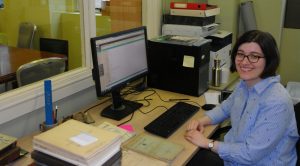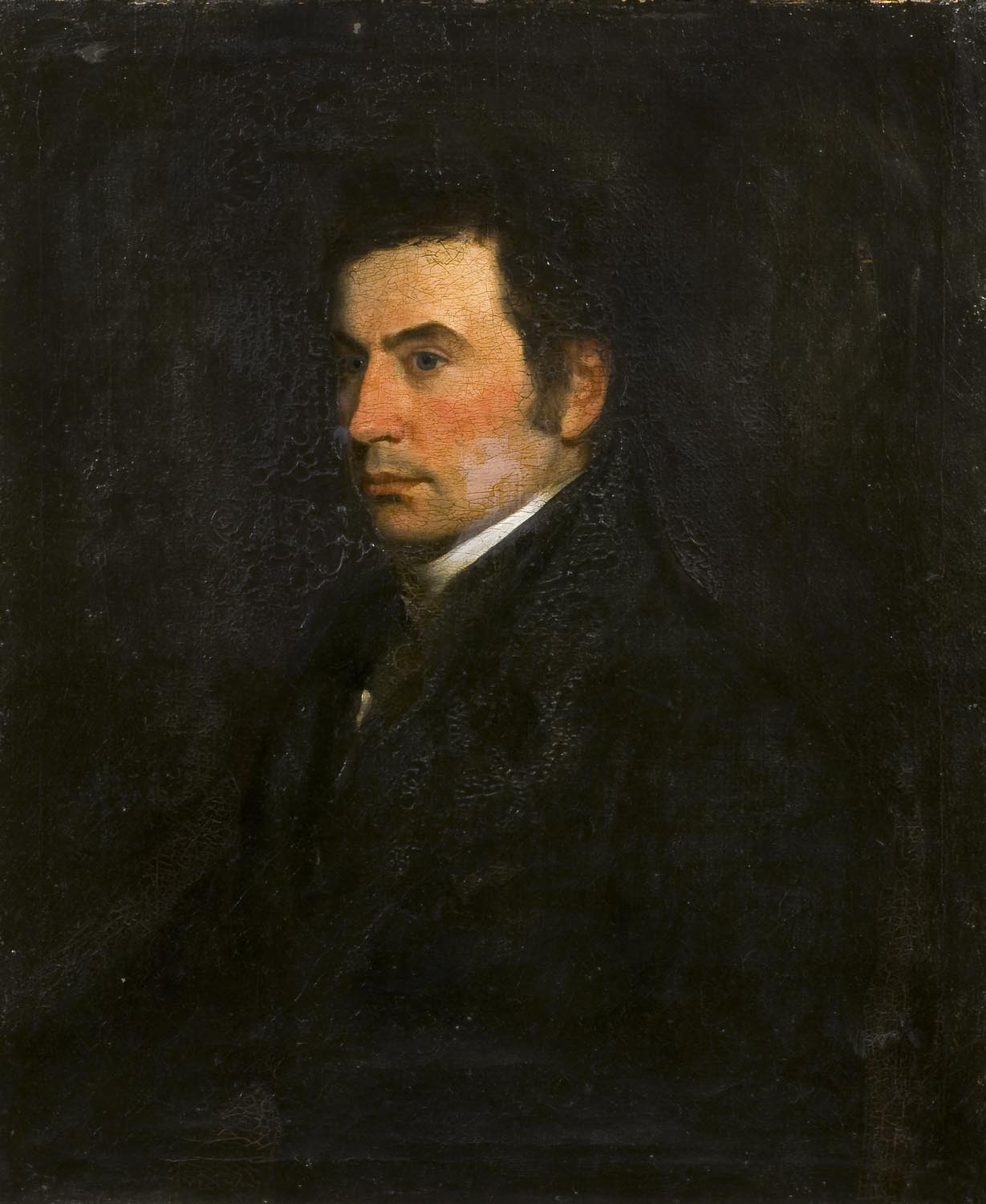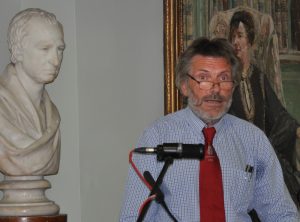Cataloguing Collections – Improving Accessibility
This week, Argula Rublack shares about her experience of working at the RAS. She is a student on placement from University College London, Library and Information Studies Masters course:
“I was first introduced to the Royal Asiatic Society during a visit as part of the module “Historical Bibliography” on my MA in Library and Information Studies, where we were shown a selection of the library’s collection to learn more about historical book formats outside Europe. During this Master’s degree students have the opportunity to undertake a placement at a library for two weeks during the third term. My tutors picked up on my interest in the rich history of intercultural exchanges and the wide variety of cultures and languages represented by the Society’s collections and arranged for my placement to take place at the Royal Asiatic Society Library. I spent the two weeks here working on several projects with these fascinating collections. During this time, I have improved my skills in cataloguing and collection management while learning about the day-to-day operations of a special collections library service and how it supports the work of the learned society attached to it.
The largest project I worked on was continuing the cataloguing of the Society’s historic journals. This involved looking at two shelves worth of journal issues ranging from the publications of scholarly societies interested in Asian studies stretching back to the late 19th century and serials from across the world including India, the Middle East, China and Japan. At first I needed to check if a record had already been entered for the item in question, which in most cases hadn’t been done yet. I created the records for the journals where necessary and gave them a barcode and shelfmark to add them to the existing journals sequence. The process also involved suggesting which of the uncatalogued materials were out of the scope of the collection and suggesting these for withdrawal. In some cases I was able to enhance existing records. For example, we found a stray copy of The Transactions of the China Branch of the Royal Asiatic Society from 1847, which had a note attached to it about how it had entered the collection. Since this was information of historical relevance to the library’s collection history, I added this in a notes field on the catalogue record. Many of the journals are over a century old, so some also had to be suggested for conservation. This was a very enjoyable task, not only because of the challenge of cataloguing a variety of multilingual, complex and often rare materials, but also because I was able to help make more information on the library holdings available for scholarly research into the history and discipline of Asian Studies on an international scale.
Another project was continuing the cataloguing of Japanese language materials in the collection. With only an intermediate understanding of the Japanese language, identifying and cataloguing Japanese academic publications was quite challenging. However, I took this as an opportunity to teach myself how to encode both the transliteration and the original Japanese title in MARC21, the international format which standardizes how catalogue records are displayed. Even though this slowed down the time of creating the catalogue entries, I thought this was a valuable investment given the international audience the library serves and it really helped to increase my understanding of multilingual cataloguing. A further task I had was to check several books which had entries on the catalogue but were missing information on the copy the Society holds including the barcode to identify it. In some cases this was a matter of simply deleting duplicate records created by accident over the years, in others it was necessary to create or enter the copy information as required.

Alongside working away on these activities at the desk and in the stacks, I gained valuable insights into how the Library functions as a vital resource to scholarship in the field of Asian Studies. Ed and Nancy’s detailed conversations with users about their respective research projects and needs in their respective roles as Librarian and Archivist reinforced to me the importance of the many ways in which we can support scholarship as information professionals by actively engaging with users. More broadly, I was able to talk to the other staff of the Society and gain insight into the work that goes into publishing the Journal of the Royal Asiatic Society, organising the events hosted on the premises and generally how the Society is administered. The library is very much an integrated part of this organism rather than a separate entity as it is in many other institutions. Seeing how all the different parts work together informed me about the role of a library in a learned society and its wider community. Ed was also kind enough to introduce me to the Japanese and Chinese holdings of the Society in more detail, which is one of my personal areas of interest.
I would like to thank Ed, Nancy and the rest of the team here for being so generous with their time and their support during my placement and for giving me so much valuable experience to take forward into my career as a librarian.”
And we thank Argula for the time she has spent working with the Collections. It has been good to have her in the Reading Room and see some more of our Collections become available to researchers.
As regular readers of our blog will be aware, we greatly appreciate the volunteers and placement students who work with our Collections to make them more accessible. We also look for opportunities to promote the collections of the Society and to bring them to the attention of new audiences. Earlier this month, the Society’s Librarian, Ed Weech, gave a paper on British Sinologist, Thomas Manning, at the conference “Exiles, Émigrés and Expatriates in Romantic-Era Paris and London”, at the École Normale Supérieure in Paris. The talk helped publicize the Society’s important archive of Manning’s correspondence, diaries, and notebooks, which was recently digitized and is now online in its entirety on our Digital Library at: http://royalasiaticcollections.org/thomas-manning-archive/. The collection includes a significant amount of French-language material, largely dating from Manning’s stay in Paris in the early 1800s, where he began his studies of the Chinese language. The Digital Library should make it much easier for overseas scholars and researchers, in France and further afield, to access this wonderful resource.

Last night (Thursday 26 April) we learnt of other Collections. The Society was delighted to host a lecture by Dr Alex McKay titled “The View from the Palace: The Sikkim Royal Archives”. Dr McKay highlighted the work of the Sikkim Palace Archive Digitisation Project, part of the British Library’s Endangered Archive Programme. The project undertook the task of preserving, cataloguing, and digitally reproducing 100,000+ pages of the Sikkim Palace Archives, dating between 1875 and 1975. Dr McKay’s lecture showed how the newly digitized archive provides new information for understanding the history of Sikkim and its relations with other entities, including the British Empire, Nepal, Tibet, and other Indian states. Dr McKay’s fascinating lecture was followed by an in-depth Q&A with the audience which continued to reveal new insights into the history of Sikkim in the late nineteenth- and early-twentieth centuries.”

The lecture next week, will be by Professor Anthony Stockwell, Vice-President of the Royal Asiatic Society. On Thursday 3rd May, 6.30pm, he will lecture on “Plunder and Restitution: Britain and the Mandalay Regalia”. We hope to welcome many of you to this event.
